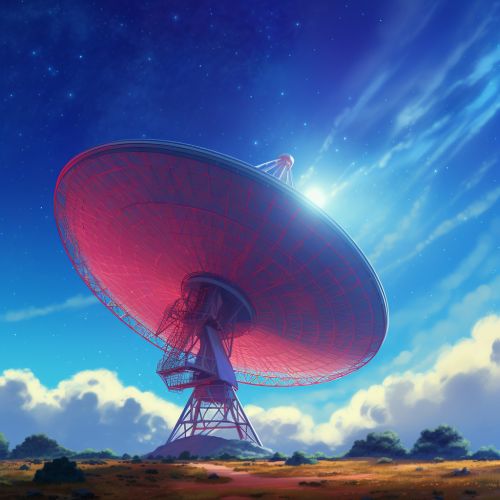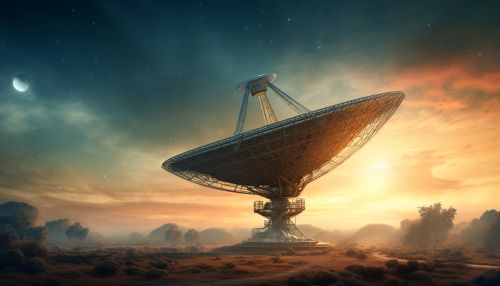Radio Astronomy
Introduction
Radio astronomy is a subfield of astronomy that involves the use of radio frequency to study celestial objects. Unlike optical astronomy, which uses light waves, radio astronomy uses radio waves to gather data about the universe. This field of study has contributed significantly to our understanding of the universe, including the discovery of quasars, pulsars, and cosmic microwave background radiation.


History of Radio Astronomy
The history of radio astronomy can be traced back to the early 20th century when scientists first began to understand that radio waves could be used to study celestial bodies. The first detection of radio waves from an astronomical object was in the 1930s by Karl Jansky, a Bell Labs engineer. He discovered that the Milky Way was a source of radio emission while investigating sources of static that might interfere with telecommunication systems.
Radio Telescopes
Radio telescopes are the primary tool used in radio astronomy. Unlike optical telescopes, which have mirrors or lenses, radio telescopes have large parabolic (dish-like) antennas that collect and focus radio waves. These antennas can range in size from a few meters to hundreds of meters in diameter. The largest single-dish radio telescope in the world, the Arecibo Observatory in Puerto Rico, has a diameter of 305 meters.
Observation Techniques
Radio astronomers use various techniques to observe radio waves from space. These techniques include interferometry, aperture synthesis, and pulsar timing. Interferometry involves combining the radio waves received by multiple antennas to produce a more detailed image than could be obtained with a single antenna. Aperture synthesis is a type of interferometry that uses a large number of smaller antennas to simulate a larger antenna. Pulsar timing involves measuring the precise intervals between pulses from a pulsar to study the properties of the pulsar and the space through which the pulses travel.
Notable Discoveries
Radio astronomy has led to numerous significant discoveries. In 1965, Arno Penzias and Robert Wilson discovered the cosmic microwave background radiation, the afterglow of the Big Bang, while working with a radio antenna. This discovery provided strong evidence for the Big Bang theory of the universe's origin. Other notable discoveries include the detection of the first exoplanets, the discovery of quasars, and the mapping of the Milky Way's structure using radio waves.
Challenges and Limitations
Despite its many successes, radio astronomy also faces several challenges and limitations. Radio waves from space are very weak, and detecting them requires very sensitive equipment. Additionally, radio waves can be interfered with by Earth's atmosphere and human-made sources of radio waves, such as TV and radio broadcasts and mobile phones. These challenges require radio astronomers to build their observatories in remote locations and continually develop new technologies to improve the sensitivity and resolution of their observations.
Future of Radio Astronomy
The future of radio astronomy looks promising, with new technologies and observatories under development. The Square Kilometre Array (SKA) is an international project to build the world's largest radio telescope, with a total collecting area of one square kilometer. The SKA will be able to probe the early universe, test the theory of general relativity, and search for extraterrestrial intelligence.
